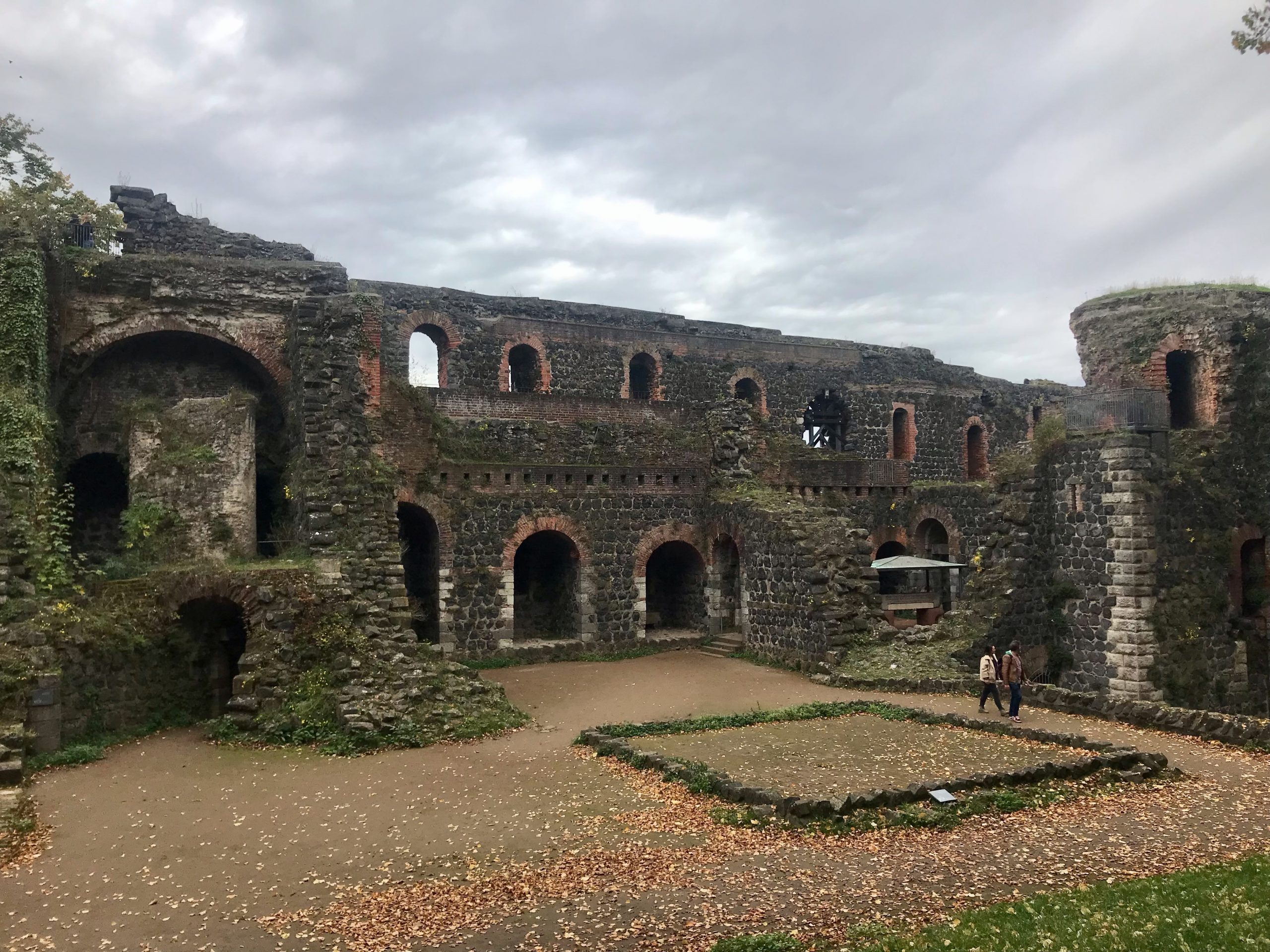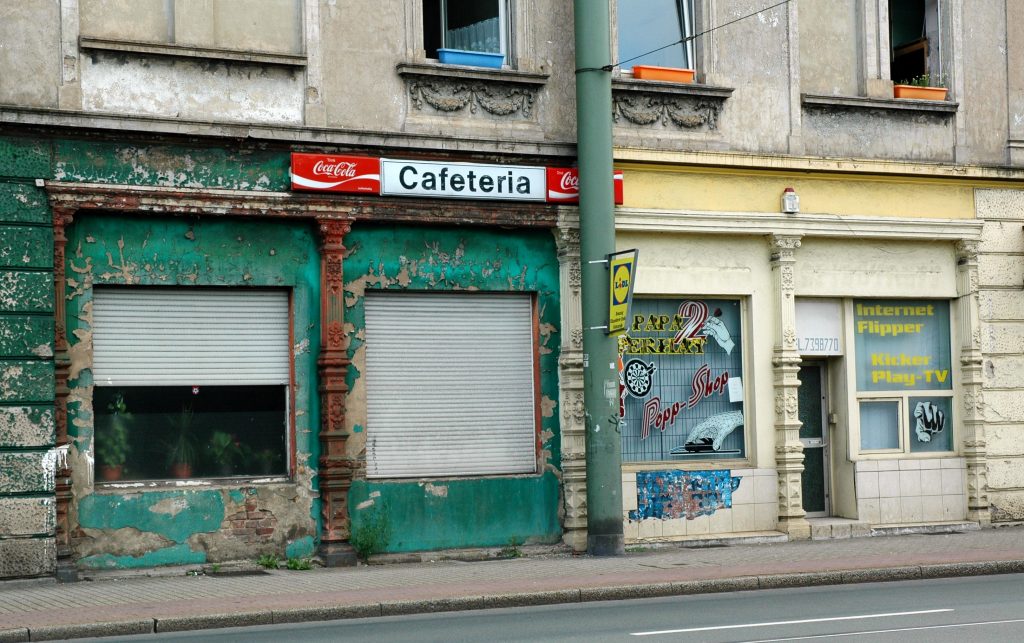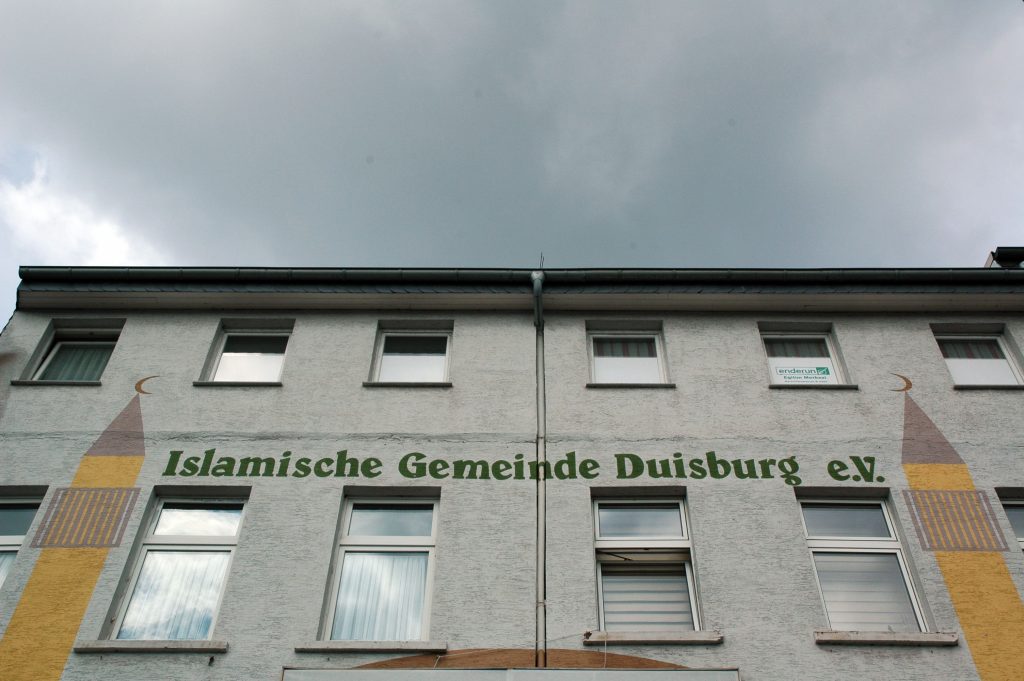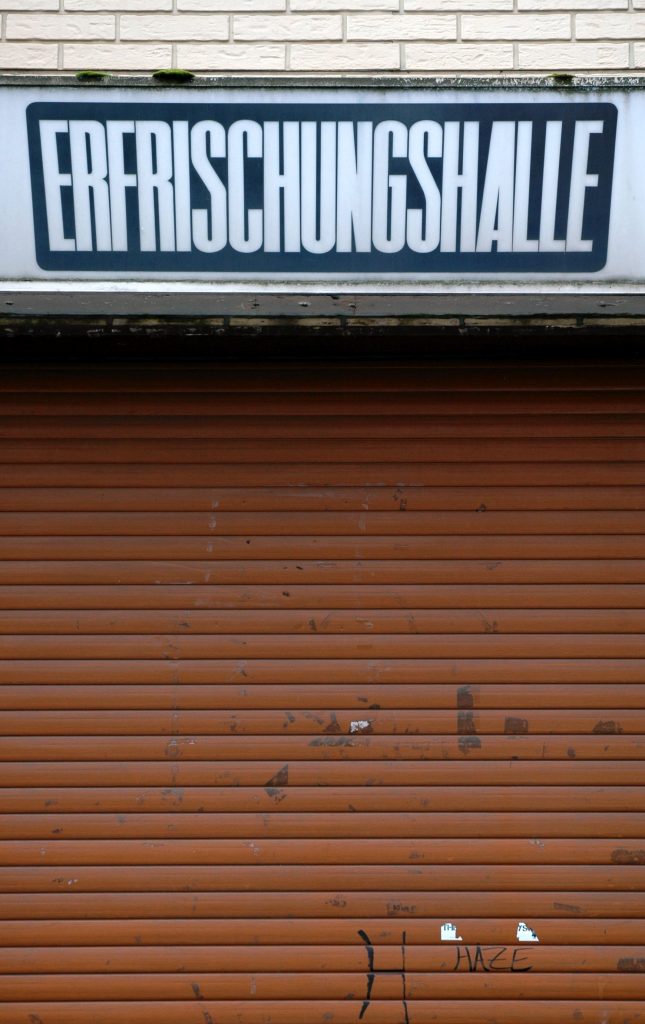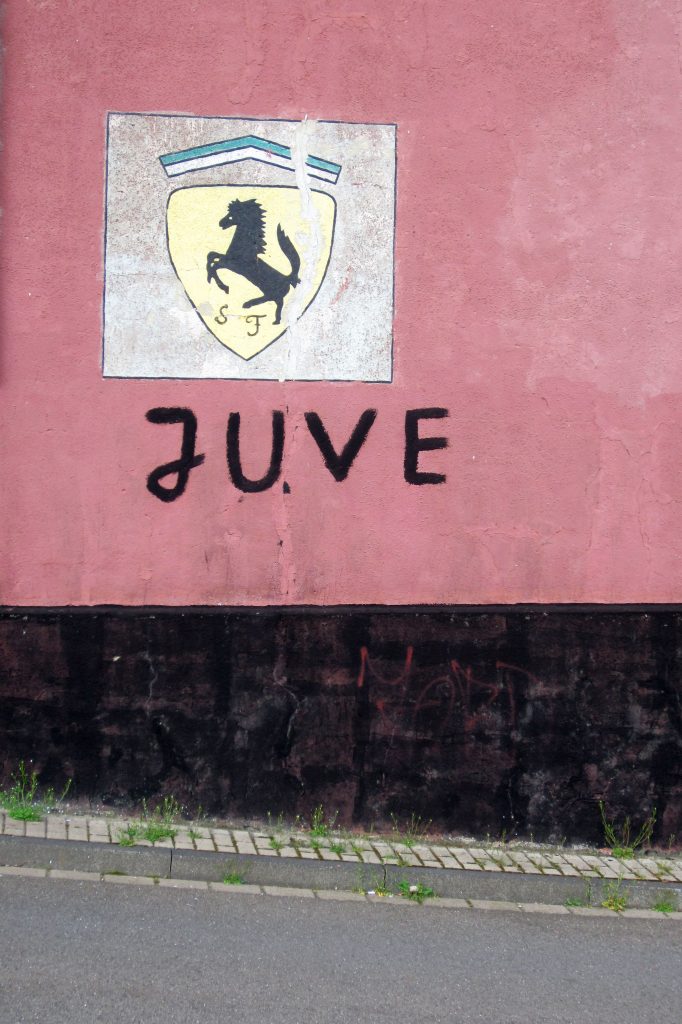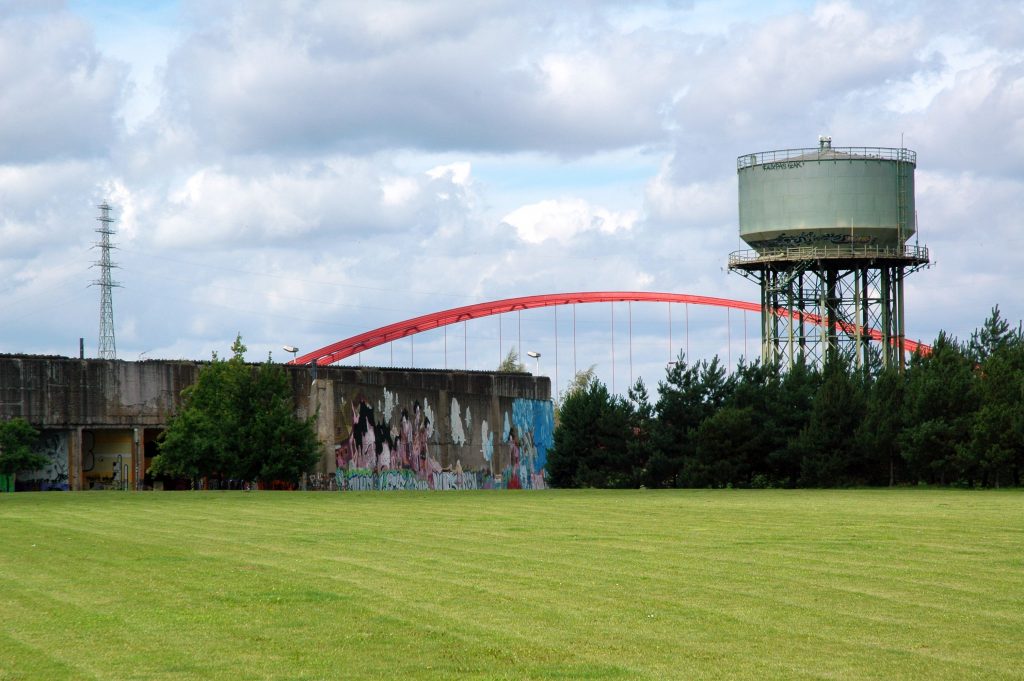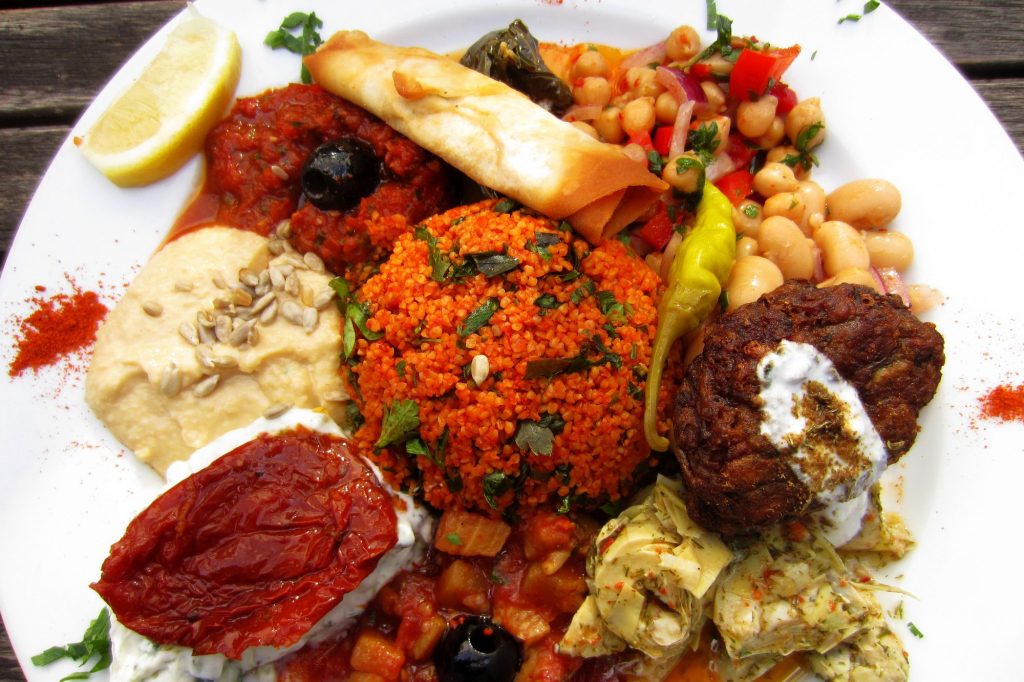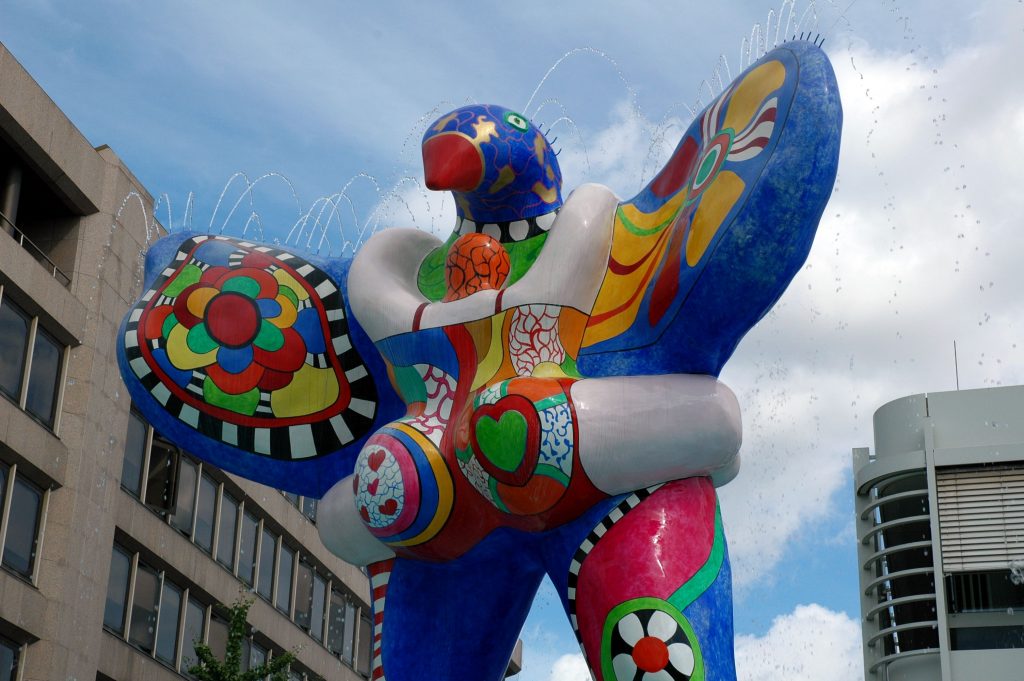Düsseldorf and Duisburg are two cities that could hardly be any less alike. One is the wealthy, economically prosperous, stylish state capital, while the other one, Duisburg, is frequently described as being past its best days and entirely unglamorous. If you are bold enough to take a glimpse behind these clichés, you will find many surprises on either side. One opportunity for this may be a bike tour from Düsseldorf to Duisburg.
Cyclists, joggers, skaters
This tour sets out from the Düsseldorf Rheinterrasse. Duisburg is 28 kilometres away, as the signs proclaim. It takes about two and a half to three hours to travel the distance by bike at a leisurely pace without any electrical amplification. The first 14 kilometres follow the river Rhine downstream. Most people living in the state capital know them well since the route to Kaiserswerth or Wittlaer is a popular evening or weekend excursion there. From the Messe/Arena level, cyclists can follow the Rhine dyke, where they are safe from cars.
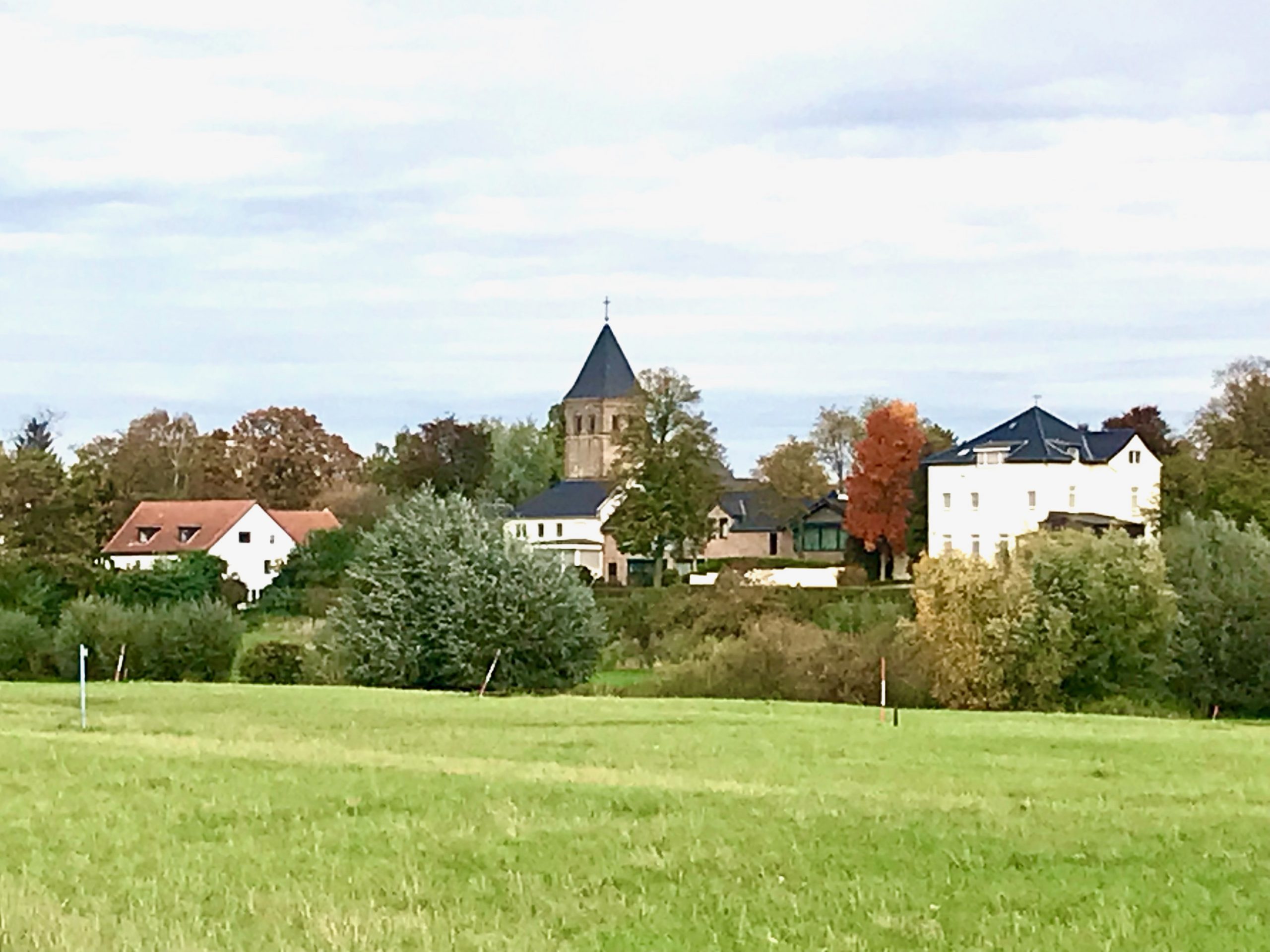
Even this wide asphalted road can get a bit crowded at times, as joggers, skaters, hikers, and cyclists are all heading towards the north of Düsseldorf. Past grazing sheep (on the left) and horses (on the right), the route leads to Kaiserswerth. You can recognise it acoustically by the accordion music performed by at least three musicians in the quarter. The district’s main attraction is the Imperial Palace. Emperor Frederick I Barbarossa had the gigantic structure built back in 1184. Its impressive ruins continue to serve as a monument from days long in the past.
Bratwurst, lemonade, potato salad
Behind Kaiserswerth, the path approaches the great river a little. The floodplains here are wide and dotted with willow trees. The first houses and a church tower mark the approach to Wittlaer. Düsseldorf’s most affluent district is at the same time the one bordering financially comparatively weak Duisburg. The Schwenke Aschlöksken garden restaurant, just across the city border, already offers Duisburg prices: Bratwurst from the grill, dark beer, soda, steaks, potato salad, and cake are on the menu at low cost.
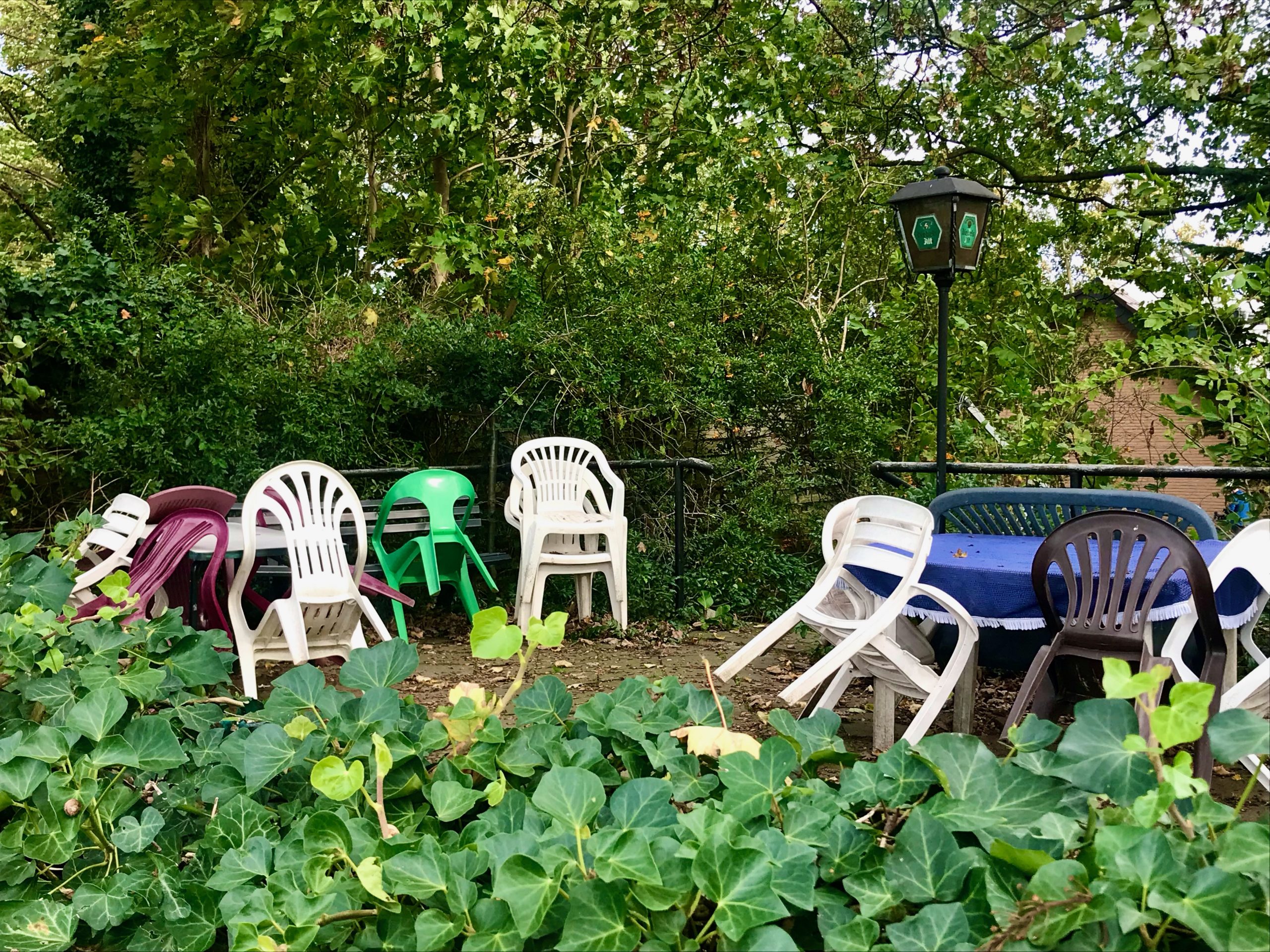
Innumerable visitors, most of them on bikes, appreciate this greatly. The Aschlöksken has a very down-to-earth appearance, too. Food is self-served. Diners can then sit in the colourful plastic chairs in the spacious restaurant garden, or right on the dyke to enjoy a pensive view of the river. There’s a great risk of ending up spending the entire day here. It takes an effort of will to get back on the bike and continue on the ride towards Duisburg. Let us promise, though: it will be worth it in the end.
Allotment gardens, sports club, puppy school
Beyond the Aschlöksken, the path swerves away from the Rhine through scenery that is abruptly changing. The massive differences claimed between the adjacent cities of NRW are mirrored in images here. High chimneys and smoking vents bear witness to the steel industry in the south of Duisburg, painting a picture of the “Pott” as it was back in the 1960s. First, however, we are going to pass through the district of Serm, originally founded by farmers and still considering itself a village today. Outside of the carnival season, which sees elaborate celebrations here, it’s a quiet and tranquil little spot with a touch of exoticism: “Viet Serm” will let you sample some Southeast Asian cuisine right on the village street.
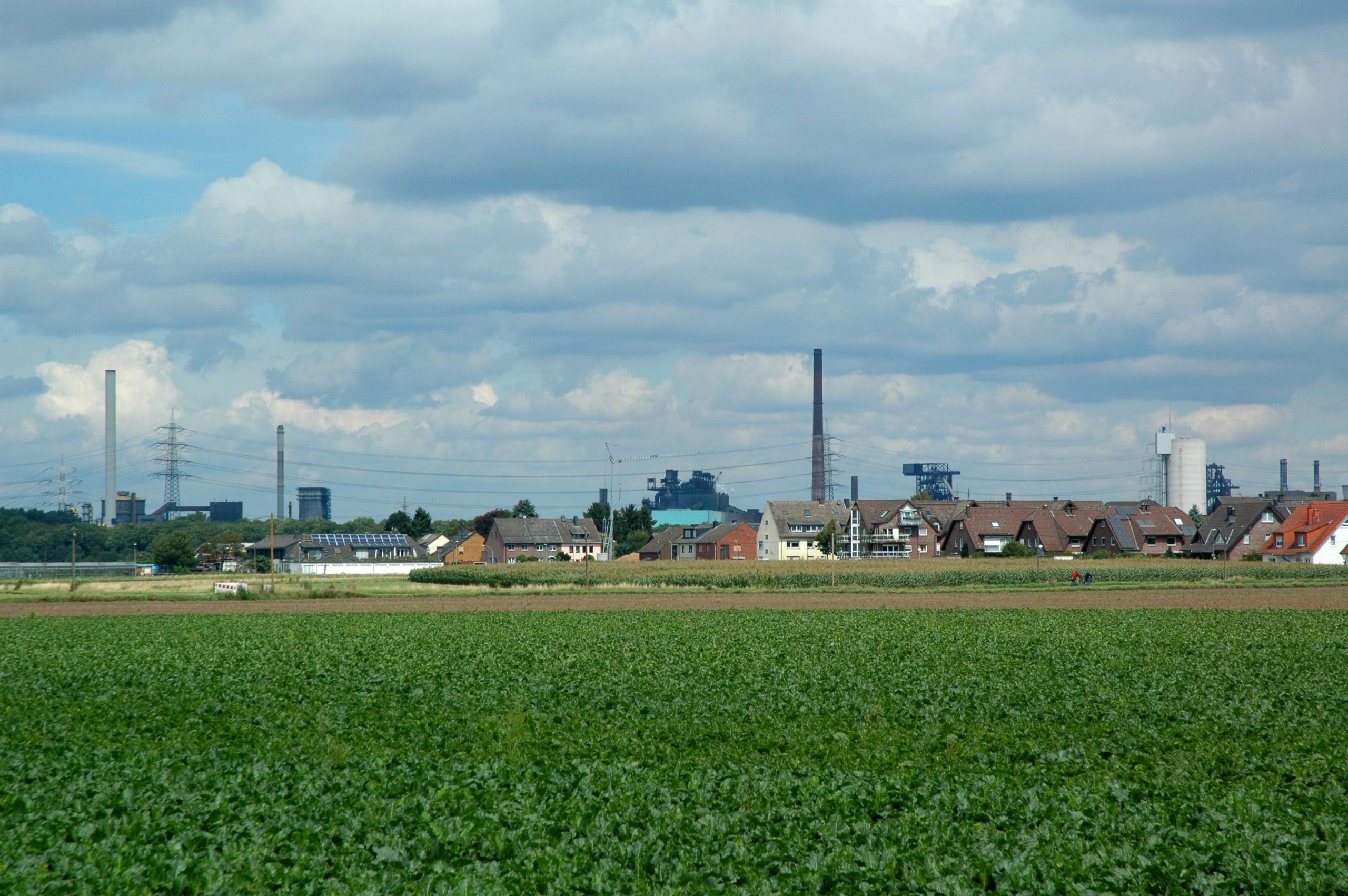
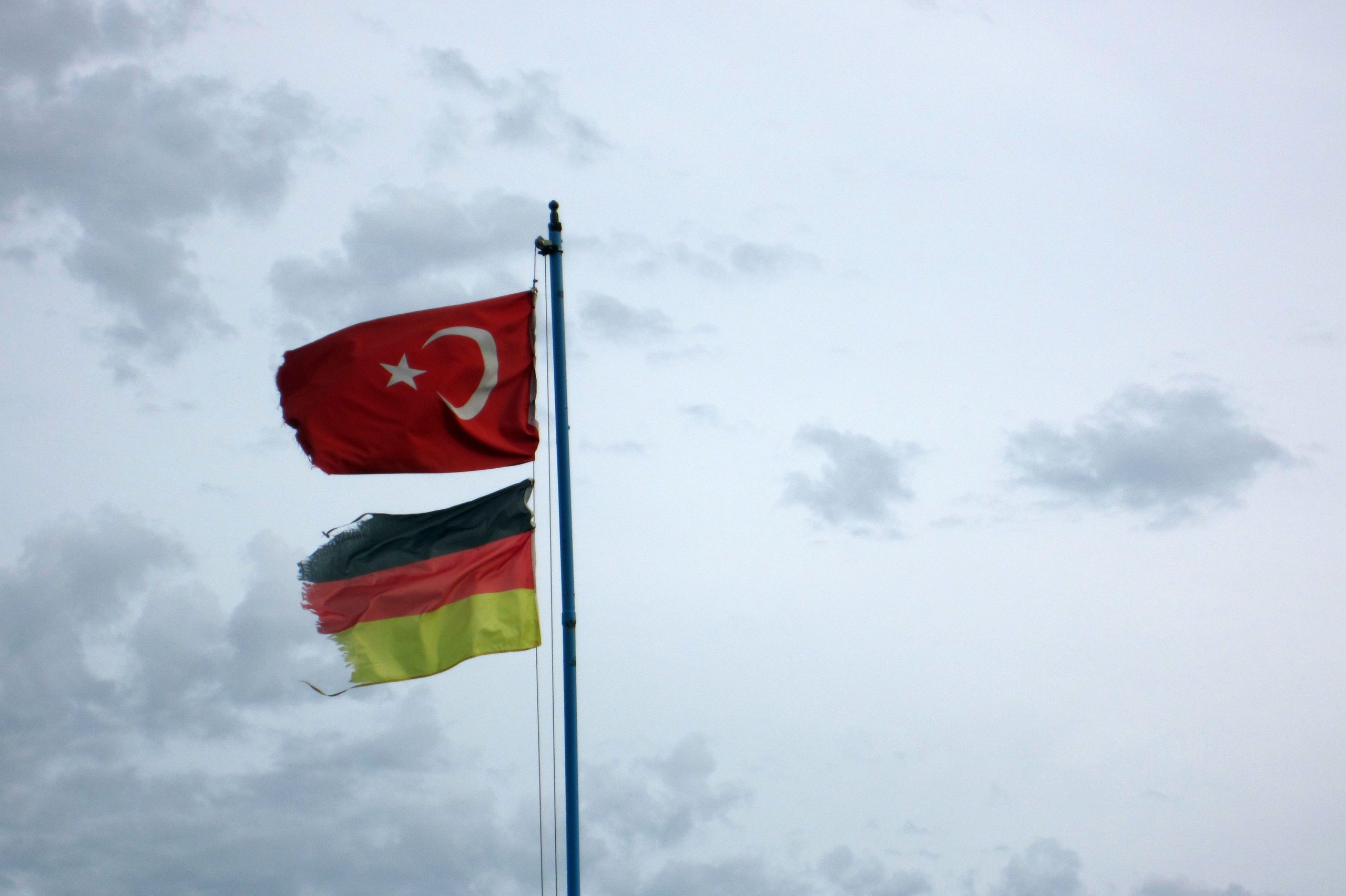
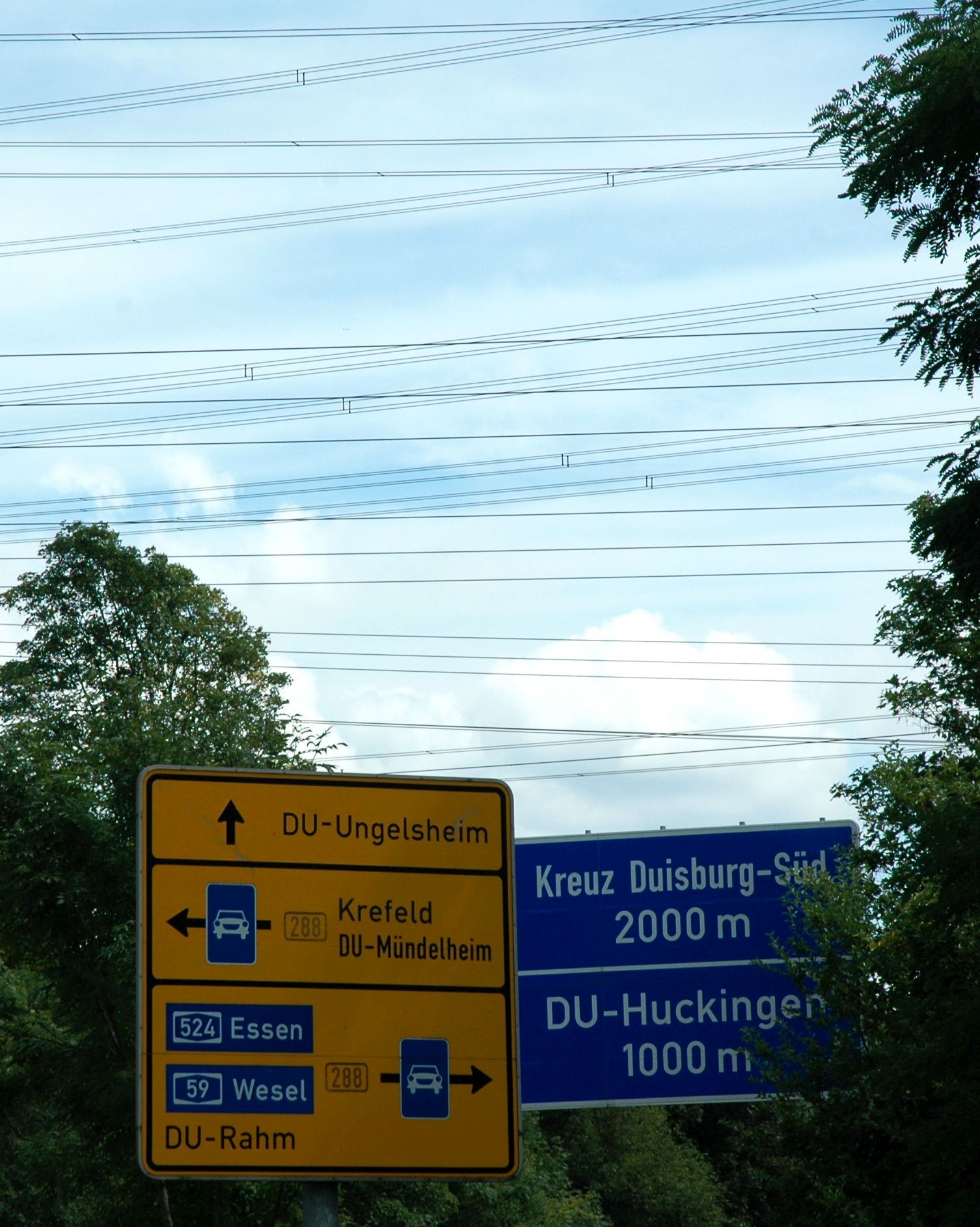
“They’re good,” a passer-by with a dog confirms when asked. Following a crossing of the B288 road, the path reaches the “Gute Ernte” allotment garden settlement. The indispensable flags in black, red, and gold are accompanied by the blue and white ones of the MSV here. Some few fans are showing off their BVB affiliation as well. Grandpas with radios on their handlebars are cruising through the scene as if in slow motion. They are the kind of people who will bear their bellies at the first rays of sunshine and will never run out of things to chat about. What a lovely spot in the Ruhr area! Passing by the sports association and the puppy school, you will reach the Schwarzbach brook and follow its banks briefly on the next stretch. Ten more kilometres are lying between you and the Duisburg city centre.
Art, harbour facilities, steelworks
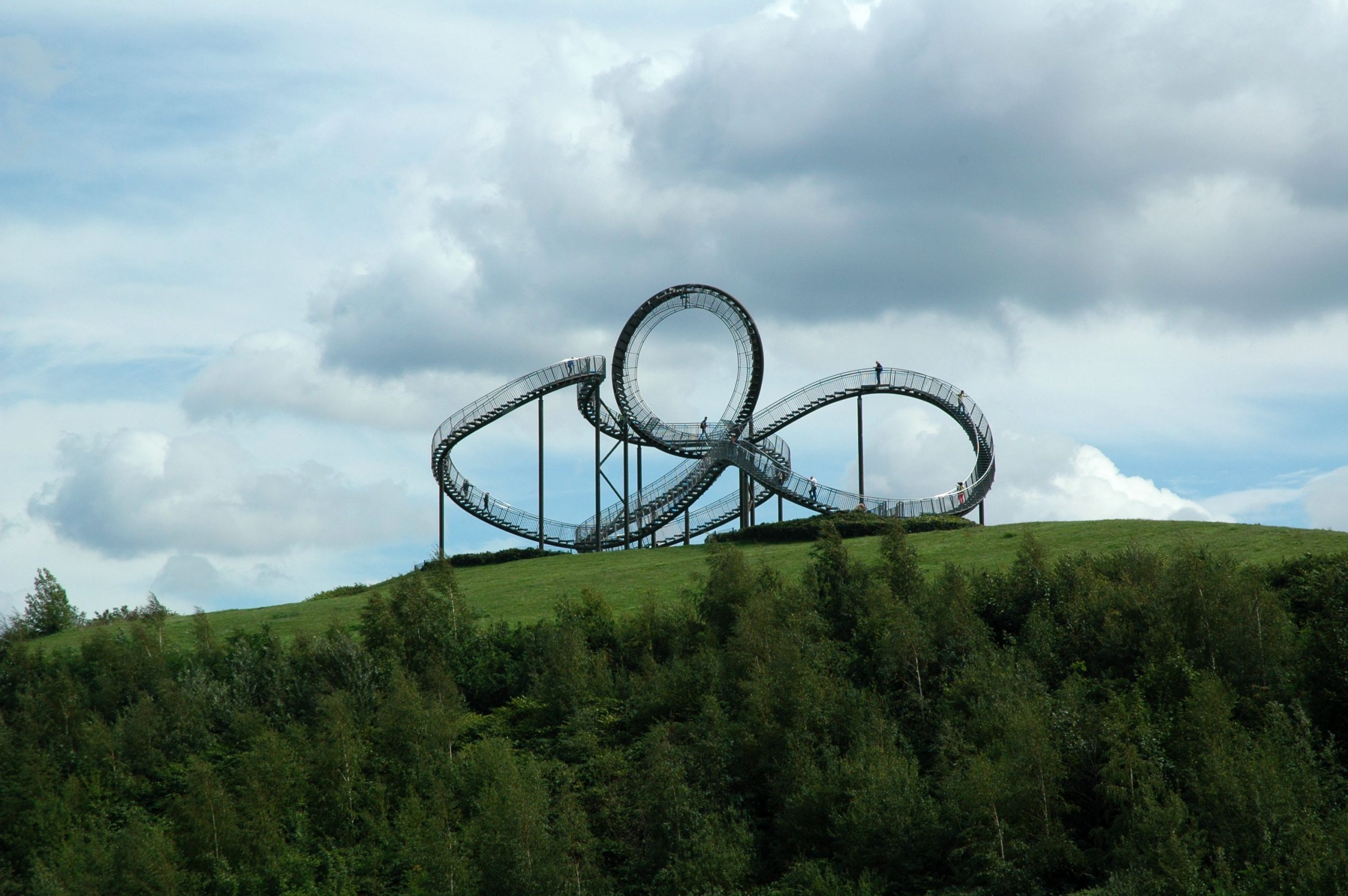
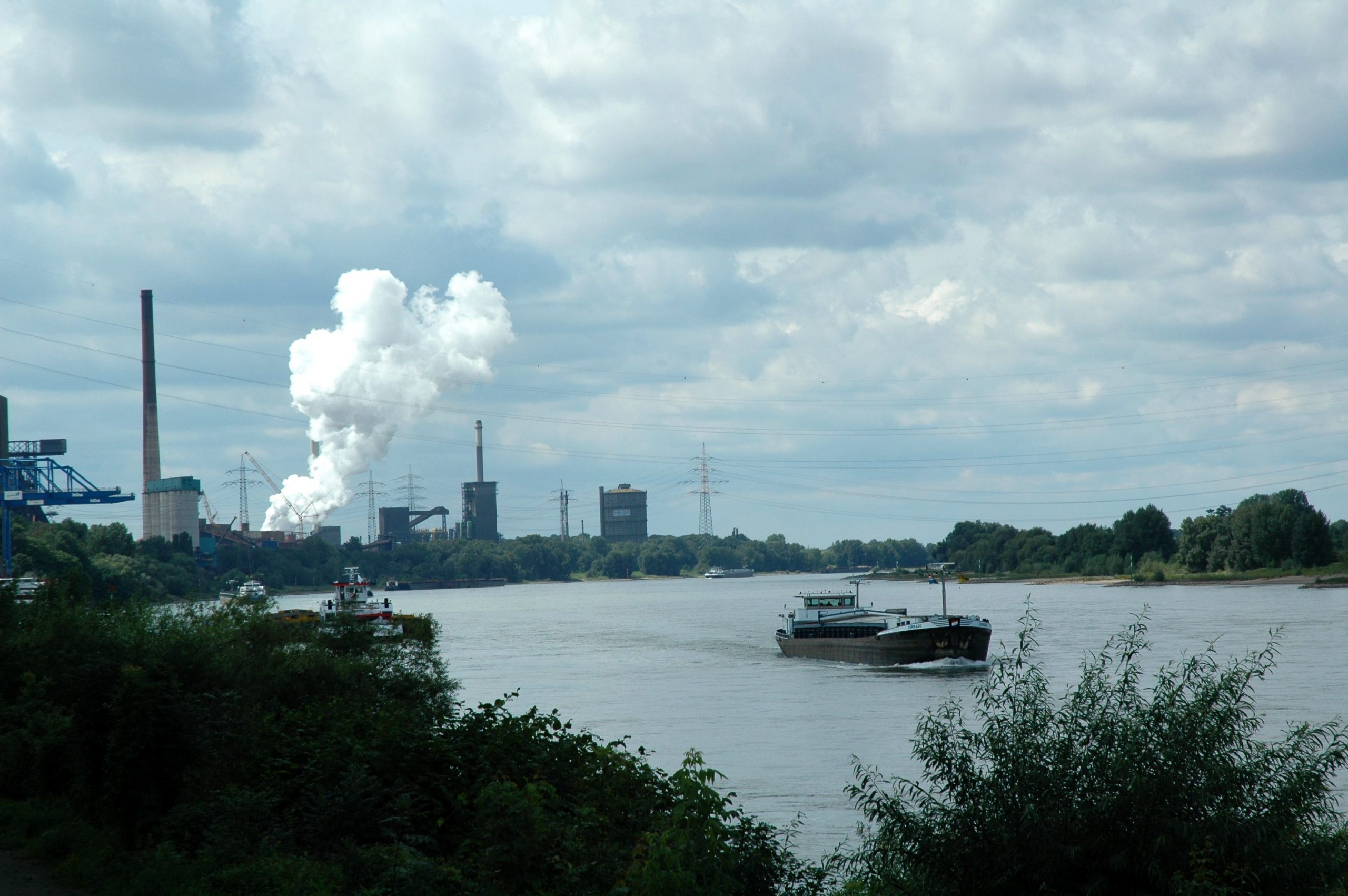
Suddenly and unexpectedly, the “Tiger & Turtle” sculpture is rising up on a green hill not long after that. The world’s only walk-on roller coaster opened in November 2011, when Duisburg’s mayor called it “one of Germany’s most beautiful places”. He clearly had a point. 250,000 visitors were there during the first eighteen months alone. On what used to be industrial wasteland, people from around the world can now enjoy the impressive vista of the adjacent Krupp Mannesmann steelworks and the port facilities of Logport II. Soon after this landmark, you will enter a residential area with streets urgently in need of repair leading to the Wanheimer Ort quarter and the Wanheim banks of the Rhine there. The latter is an odd blend of riverside promenade, green and tree-covered sections, commercial and industrial bits.
Junk properties, casinos, sportswear
Shortly afterwards, you are going to enter a neighbourhood that is viewed as quite problematic. Talking about Duisburg-Hochfeld, people frequently think of junk properties, immigrants from South-Eastern Europe, prostitution, and the working class. All of these things are also true. Life happens mostly out in the streets between the Plovdiv café and the Istanbul bakery, between the casinos and Woolworth’s. Men of all age groups, dressed in sportswear and slippers, everywhere here probably have no idea how they are going to pass this day and the many days to follow.
Capoeira, concerts, cupcakes
But Hochfeld is not limited to its cliché, however. The Rheinpark, completed in 2009, offers plenty of space for playing football, skating, or having a picnic. The park’s Café Ziegenpeter, co-run by people with and without disabilities, is located right on the river Rhine and relies on ecological sustainability. The Hochfeld house project is aiming to turn this discredited quarter more colourful and liveable by offering capoeira, yoga, jam sessions, and concerts. The ground floor at Johanniterstraße 28 houses the Krümelküche, Duisburg’s first vegan café. If you are not ready for some lavender poppy seed cupcakes or stuffed aubergine with rice, spicy mince, yoghurt, and harissa sauce and pomegranate seeds this close to the end of your tour, you’ll probably be better served by the less healthy snacks waiting for you another two kilometres down the road. There, the City Grill is offering all kinds of fried food in Untermauerstraße, an unobtrusive cul-de-sac on the edge of the city centre. The snack bar under a yellow awning, with a yellow bin and yellow barrel used as a standing table, has been around since 1964.
It has seen some prominent guests such as former Chancellor Gerhard Schröder and Horst Schimanski. In fact, the fries here are so good that they alone are easily worth the 30-kilometre trip. Make sure to drop by the works of two internationally renowned artists before returning to Düsseldorf – either by bike or by taking the 15‑minute train ride from the Duisburg main station: One is the König-Heinrich-Platz underground station, designed by Gerhard Richter and his then-student and later wife Isa Genzken in 1988. The other is located in the Königstraße pedestrian zone. This colourful fountain with a sculpture by French artist Niki de Saint Phalle, frequently used by children to splash around in in summer, is impossible to miss. These are surely two pieces that the stylish state capital will envy down-to-earth, lovable Duisburg for.
Sights to check out along the road:
Kaiserpfalz, Burgallee, Düsseldorf
Tiger & Turtle, Ehinger Str. 117 (in the Angerpark), Duisburg
Rheinpark Hochfeld, Liebigstr. 70, Duisburg
Life Savor, fountain by Niki de Saint Phalle and Jean Tinguely, corner Königstraße/Düsseldorfer Straße, Duisburg
Mural by Gerhard Richter and Isa Genzken, König-Heinrich-Platz underground station, Duisburg
Restaurants in Duisburg:
Gartenwirtschaft Schwenke Aschlöksken, Am Hasselberg 290, Duisburg
Viet Serm, Dorfstr. 131, Duisburg
Ziegenpeter, Liebigstr. 70, Duisburg
Krümelküche, Johanniterstr. 28, Duisburg
Café Kasbah, Heerstr. 267, Duisburg


